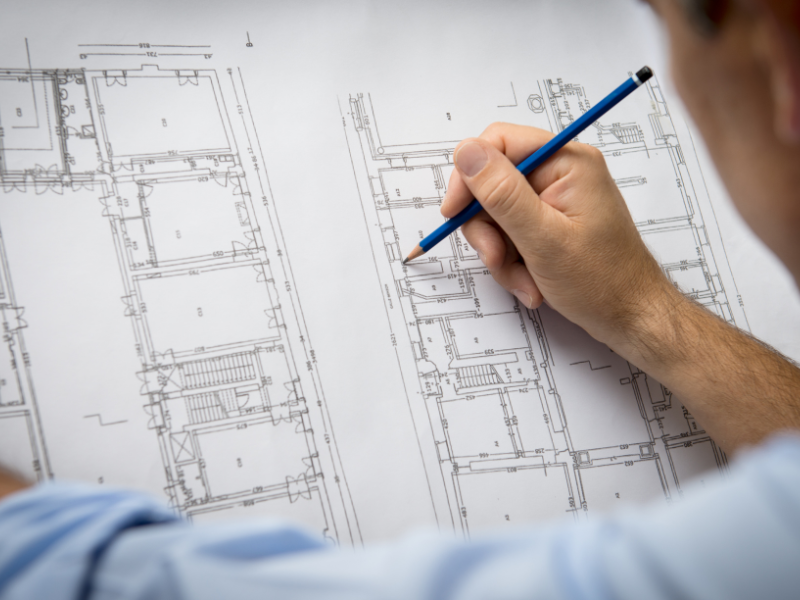Architect Portfolio Tips for Standing Out in the Industry
Architect Portfolio Tips for Standing Out in the Industry
Blog Article
Comprehending the Diverse Job Paths Available for Aspiring Architect
As a hopeful Architect, you have a globe of occupation paths waiting for you. Whether you're drawn to typical architecture or the subtleties of sustainable style, there's a niche that lines up with your passions.
Standard Architecture: Creating Buildings and Structures
Typical style concentrates on making structures and frameworks that mix capability with visual charm. Your styles can show cultural heritage, showcasing regional traditions while meeting modern needs.
You'll develop abilities in composing, model-making, and website evaluation, enabling you to picture and interact your concepts properly. Involving with customers, you'll need to comprehend their vision and translate it into feasible designs.
Furthermore, constructing codes and sustainability techniques are crucial in your job, ensuring your structures are eco pleasant and secure. As you grow in your profession, you'll find possibilities in household, industrial, or perhaps restoration tasks, each offering distinct challenges. Welcoming conventional style leads the way for a satisfying career that pays tribute to the past while shaping the future.
Urban Preparation: Shaping Neighborhoods and Public Spaces
As an aspiring Architect, you can play a necessary role as a city planner, changing how areas work and interact. By utilizing area interaction approaches, you'll ensure that residents have a voice fit their environment. And also, integrating sustainable design concepts will assist create rooms that not only fulfill today's requirements yet likewise shield the future.
Function of Urban Planners
While lots of could assume of engineers as the single enthusiasts behind buildings, urban planners play an important role in shaping the more comprehensive landscape of areas and public rooms. By working together with various stakeholders, you'll help make parks, transport systems, and property areas that promote social communication and access. Your experience in spatial style and neighborhood dynamics permits you to imagine future growth while maintaining cultural heritage.
Community Involvement Methods
Effective area interaction strategies are essential for metropolitan planners to assure that the voices of citizens are heard and valued in the preparation process. To cultivate significant discussion, you must prioritize open discussion forums and workshops where community participants can express their concepts and concerns. Usage surveys and social networks to reach a wider audience, making sure diverse point of views are included. Working together with neighborhood organizations can boost count on and promote deeper connections. It's crucial to give clear details regarding proposed tasks and decision-making procedures, permitting locals to really feel informed and equipped. By proactively integrating and paying attention feedback, you'll produce areas that mirror the neighborhood's demands, ultimately causing even more sustainable and effective city settings. Embrace transparency and constant discussion for long-term impact.
Lasting Layout Concepts
When creating metropolitan spaces, including sustainable design concepts is essential for creating environments that thrive both environmentally and socially. Think about integrating eco-friendly spaces, like yards and parks, to enhance biodiversity and boost air top quality.
Creating with water conservation in mind is additionally crucial-- consider rain gardens and absorptive surfaces to take care of stormwater. Involving area members throughout the planning procedure guarantees that the areas you produce satisfy their demands and motivate social communication. By embracing these concepts, you'll contribute to lively, lasting metropolitan landscapes that profit everyone.

Landscape Design: Producing Sustainable Exterior Atmospheres
As you discover landscape style, you'll discover important layout principles that create functional and attractive outside spaces. Lasting practices play an essential role in ensuring these atmospheres thrive while decreasing environmental influence. Plus, you'll discover a variety of occupation possibilities that enable you to make an actual difference in how people connect with nature.
Layout Principles in Landscape
Understanding design principles in landscape style is important for producing lasting outdoor settings that harmonize with nature. You'll need to consider aspects like equilibrium, scale, and proportion to ensure your designs feel natural and inviting. Additionally, pay interest to seasonal modifications, creating with products that enhance the surroundings year-round.
Sustainable Practices Review
Lasting methods in landscape design not only concentrate on visual appeals but additionally prioritize ecological health and source preservation. By incorporating native plants, you enhance biodiversity and lower the demand for chemical plant foods and chemicals. Carrying out efficient watering systems assists save water and minimizes drainage, securing nearby ecological communities. You can create spaces that advertise soil health, such as exercising and utilizing natural materials permaculture principles. In addition, integrating green framework, like rain gardens and permeable sidewalks, aids in stormwater monitoring and decreases city heat. When you develop outdoor settings with sustainability in mind, you contribute to a much healthier earth and offer rooms that foster area link. Eventually, these techniques guarantee your styles profit both individuals and the setting for web several years ahead.
Profession Opportunities Exploration
With a solid foundation in sustainable practices, landscape design uses a range of job courses that permit you to make a meaningful effect on the atmosphere. You can function as a landscape developer, developing cosmetically pleasing and useful exterior spaces, or focus on environmental restoration, aiding to revitalize damaged ecosystems. Urban coordinators typically work together with landscape designers to produce environment-friendly spaces in city setups, improving city livability. If you're passionate concerning education and learning, take into consideration ending up being a landscape design teacher, motivating future generations. In addition, you may deal with nonprofits concentrated on environmental sustainability or participate in research to introduce brand-new practices. Each path not only forms attractive settings yet also fosters a much healthier earth for future generations.
Lasting Layout: Concentrating on Eco-Friendly Practices
As you discover your job in style, accepting eco-friendly practices can establish you apart in an affordable field. Lasting design focuses on creating buildings that minimize ecological impact while improving resident wellness. By including renewable materials, energy-efficient systems, and sustainable building methods, you'll add to a greener future.
Start by obtaining knowledge of environment-friendly accreditations like LEED or BREEAM, which can strengthen your qualifications. Think about just how natural light, air flow, and thermal efficiency can enhance layout. Work together with designers and ecological consultants to innovate services that minimize waste and conserve resources.
Do not neglect the significance of community involvement-- appealing local stakeholders can inspire layouts that harmonize with the environment. As clients increasingly prioritize sustainability, your competence in green practices will not only bring in jobs but likewise fulfill your passion for responsible architecture. Embrace this important element of the profession, and view your profession thrive.
Historic Preservation: Protecting and Recovering Social Heritage
While you start on your building journey, consider the essential role of historical conservation in keeping our cultural heritage. This field focuses on the defense and reconstruction of considerable buildings, sites, and frameworks that tell the stories of our past. By taking part in historical preservation, you'll help guard the building tradition that shapes area identification.
As a historical preservation Architect, you'll assess historical value and examine the condition of frameworks. You'll work very closely with historians and preservationists to ensure authentic repair techniques are utilized. This profession course permits you to blend creativity with research study, allowing you to create solutions that appreciate initial materials and workmanship.
Your job not just adds to sustainability by reusing existing structures yet also cultivates a feeling of pride within areas. Embracing this path will assist you come to be a guardian of history, maintaining the stories and aesthetic appeals that enhance our lives.
Inside Architecture: Enhancing Indoor Spaces
Historic conservation and indoor design both share a commitment to enhancing the developed setting, but they concentrate on various aspects. While historical preservation emphasizes preserving a framework's historic and cultural value, interior design nos in on optimizing indoor areas for capability and aesthetic appeals.
As an ambitious Architect, you'll locate that interior architecture allows you More Bonuses to blend creative thinking with technical skills. You'll develop areas that not only look great however additionally promote convenience and performance. This area entails understanding how light, shade, and materials connect within a room, influencing state of mind and usability.
You'll deal with numerous tasks, from residential homes to business offices, making certain that each setting meets the demands of its owners. By prioritizing individual experience, you can transform interiors right into motivating and useful areas, making a substantial effect on exactly how people communicate with their surroundings. Accept the possibility to boost indoor environments and form the means individuals function and live.
Industrial Layout: Combining Performance With Aesthetic Appeals
Industrial design plays a vital function in creating items that effortlessly blend visual appeals with performance, making certain that what you make use of daily is not only aesthetically appealing yet additionally sensible. As an aspiring Architect, you can engage on your own in this field, concentrating on developing everything from furnishings to consumer electronic devices. Your work entails comprehending customer requirements, materials, and producing processes, enabling you to develop innovative remedies that improve day-to-day experiences.
In commercial layout, you'll commonly team up with online marketers, designers, and makers, making sure that your layouts are not only lovely but additionally possible. This profession path provides a dynamic atmosphere where creative thinking meets usefulness, making it a fulfilling option for designers interested in shaping the items of tomorrow.
Regularly Asked Inquiries
What Educational Certifications Do I Required to Become an Engineer?
To end up being a designer, you'll need a specialist degree in design, usually a Bachelor's or Master's. Additionally, you'll need to finish an internship and pass the Architect Enrollment Examination to exercise lawfully.
Are There Accreditation Requirements for Different Architectural Occupation Paths?
Yes, there're certification needs for different building paths. Architect. You'll require to pass examinations, full teaching fellowships, official website and often seek specialized training, depending upon your chosen focus, like landscape style, urban style, or historic conservation
What Software Program Skills Are Important for Engineers Today?

How Can I Gain Practical Experience While Researching Architecture?
You can obtain functional experience by interning at architectural firms, participating in style competitions, volunteering for neighborhood jobs, or collaborating with classmates on real-world assignments. These chances boost your abilities and build important connections in the sector.
What Work Opportunities Exist Outside Conventional Architecture Firms?
You can check out numerous work possibilities outside conventional design companies, like city planning, interior style, landscape design, construction administration, realty growth, or even functions in sustainability consulting. Each offers unique obstacles and incentives.
Whether you're attracted to traditional design or the nuances of lasting layout, there's a particular niche that aligns with your rate of interests.When creating urban areas, integrating sustainable style principles is essential for producing settings that grow both ecologically and socially.As you explore landscape design, you'll find necessary style concepts that develop attractive and functional outside areas.Comprehending layout principles in landscape style is vital for producing lasting outside atmospheres that integrate with nature.In industrial layout, you'll frequently collaborate with marketing experts, makers, and designers, guaranteeing that your designs are not just gorgeous however also feasible.
Report this page